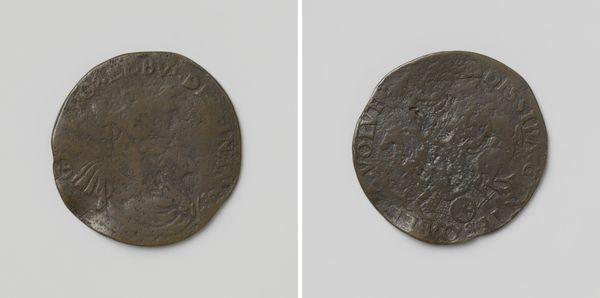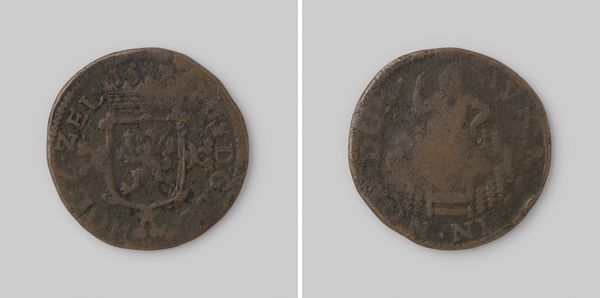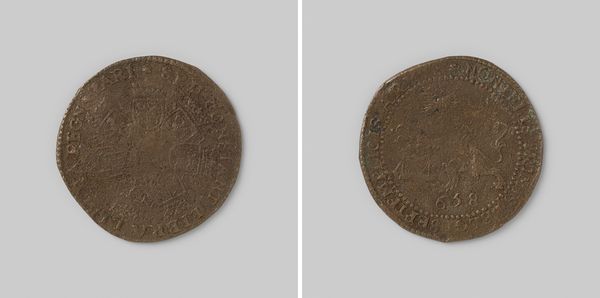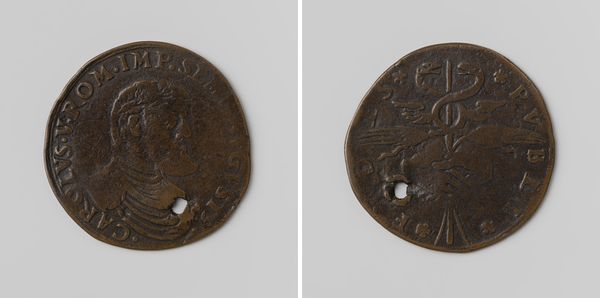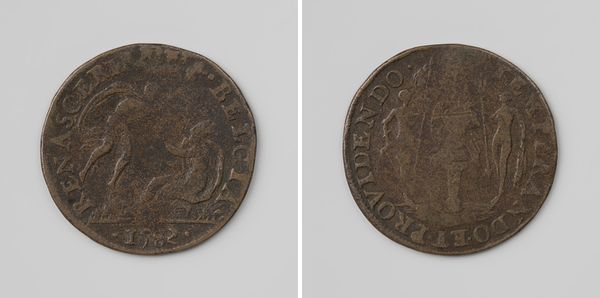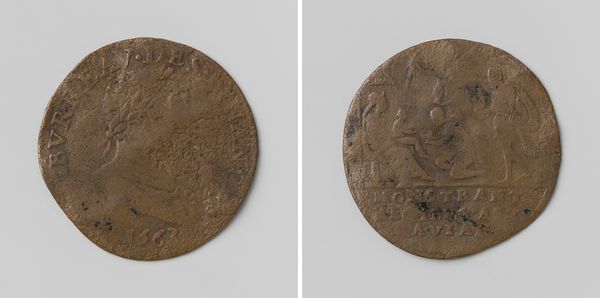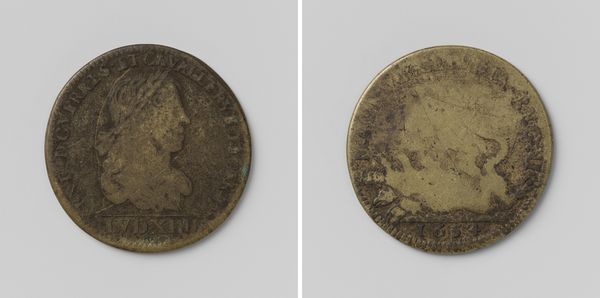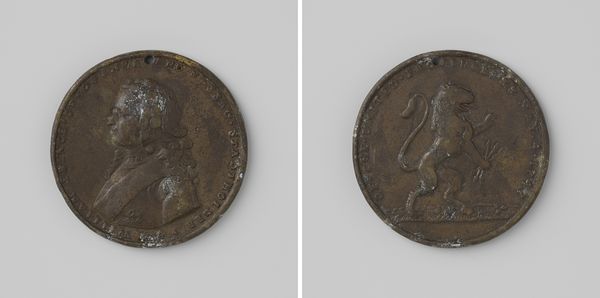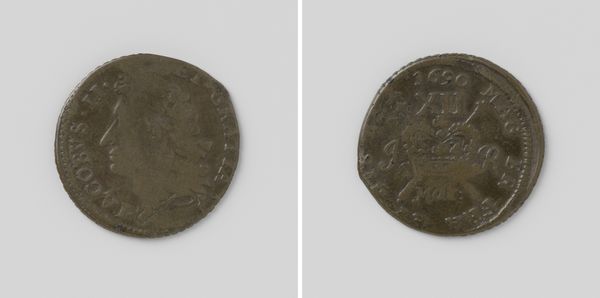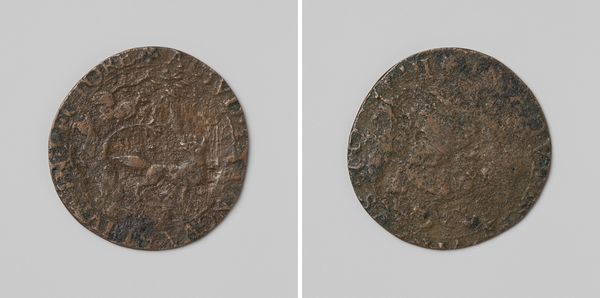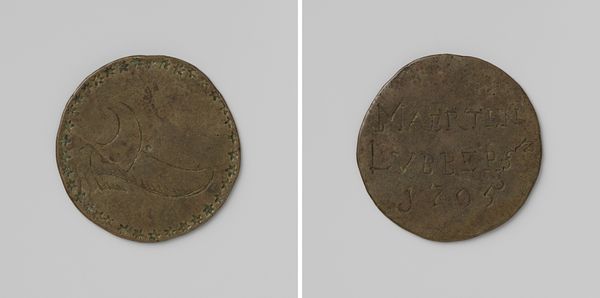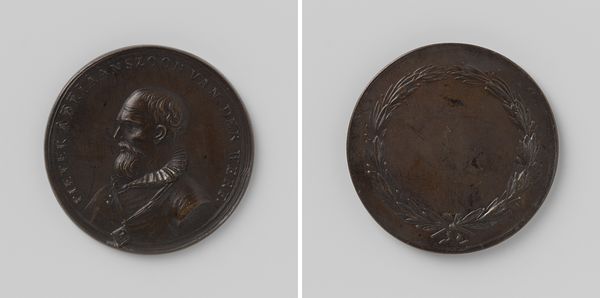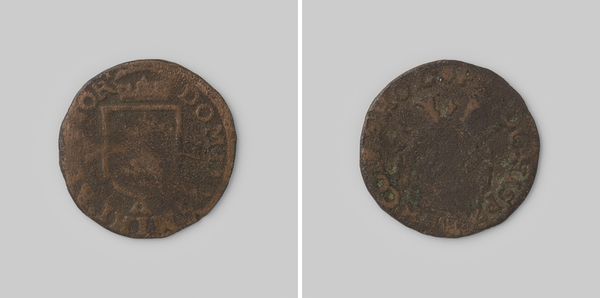
Overwinningen op de Spanjaarden in Vlaanderen, rekenpenning ter ere van Francois-Hercule, hertog van Anjou 1582
0:00
0:00
carving, metal, relief, sculpture
#
portrait
#
carving
#
metal
#
sculpture
#
relief
#
sculptural image
#
11_renaissance
#
sculpture
#
carved
#
history-painting
Dimensions: diameter 2.6 cm, weight 3.19 gr
Copyright: Rijks Museum: Open Domain
Curator: This medal, titled "Victories Over the Spaniards in Flanders," dates from 1582. It honors François-Hercule, Duke of Anjou, and is currently held in the collection of the Rijksmuseum. Editor: Immediately, I’m struck by its somber, almost weary appearance. The material, likely bronze, is darkly patinated, which mutes any potential brilliance in the sculptural relief. It really does appear to show the weight of its years. Curator: Yes, the patina is significant. Consider the turbulent times in which it was produced, during the Dutch Revolt against Spanish rule. François-Hercule's involvement was seen as crucial by some, a French alliance to counter Spanish power. Medals like this one played a crucial role in crafting public image. Editor: Image is key here. Look how the formal language reinforces the message. The portrait is, admittedly, a little crude – but conveys an air of authority. The reverse, portraying the lion is similarly rendered but effectively captures its power, reinforcing themes of dominion. Curator: Absolutely, the iconography is paramount. The Lion is there, the Spanish are subjugated underfoot—visual shorthand designed for mass communication. These medals served a powerful propagandistic purpose, solidifying the Duke's image as a leader. The power to frame him in a winning light was more important than capturing true likeness. Editor: It is fascinating that you frame it as mass communication in a period preceding mass media. It goes without saying that any artistic language serves a distinct purpose, from simply being, existing as nothing but aesthetically pleasing to reinforcing beliefs through persuasive techniques. I think it's crucial to highlight that not all art should or has to "mean something", in the socially impacting sort of way, of course. Curator: I find that an astute reflection. Though perhaps not intended to "mean something", its present condition bears meaning. Editor: Well put; its very survival transforms it into something beyond simple praise— it speaks to resilience.
Comments
No comments
Be the first to comment and join the conversation on the ultimate creative platform.
